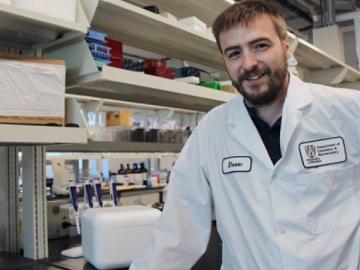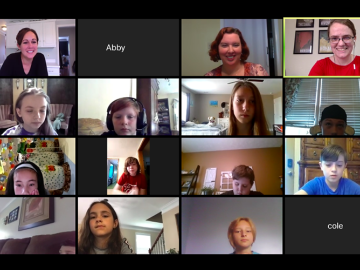
Filter News
Area of Research
- (-) Neutron Science (127)
- (-) Supercomputing (80)
- Advanced Manufacturing (22)
- Biology and Environment (30)
- Building Technologies (1)
- Computational Biology (1)
- Computational Engineering (1)
- Computer Science (8)
- Electricity and Smart Grid (3)
- Energy Science (149)
- Functional Materials for Energy (1)
- Fusion and Fission (10)
- Fusion Energy (3)
- Isotope Development and Production (1)
- Isotopes (4)
- Materials (125)
- Materials Characterization (1)
- Materials for Computing (19)
- Materials Under Extremes (1)
- National Security (37)
- Nuclear Science and Technology (16)
- Quantum information Science (2)
- Sensors and Controls (1)
- Transportation Systems (1)
News Topics
- (-) 3-D Printing/Advanced Manufacturing (10)
- (-) Cybersecurity (9)
- (-) Frontier (33)
- (-) Grid (5)
- (-) Machine Learning (17)
- (-) Materials Science (33)
- (-) Neutron Science (122)
- (-) Polymers (3)
- (-) Space Exploration (5)
- Advanced Reactors (2)
- Artificial Intelligence (40)
- Big Data (23)
- Bioenergy (14)
- Biology (16)
- Biomedical (28)
- Biotechnology (2)
- Buildings (4)
- Chemical Sciences (7)
- Clean Water (2)
- Composites (1)
- Computer Science (99)
- Coronavirus (19)
- Critical Materials (3)
- Energy Storage (14)
- Environment (29)
- Exascale Computing (26)
- Fossil Energy (1)
- Fusion (2)
- High-Performance Computing (44)
- Hydropower (1)
- Isotopes (2)
- Materials (28)
- Mathematics (2)
- Microscopy (8)
- Molten Salt (1)
- Nanotechnology (19)
- National Security (8)
- Nuclear Energy (7)
- Partnerships (1)
- Physics (17)
- Quantum Computing (20)
- Quantum Science (30)
- Security (7)
- Simulation (16)
- Software (1)
- Summit (43)
- Transportation (10)
Media Contacts

Does vaping and smoking e-cigarettes put you at higher risk of COVID-19 complications? UWindsor’s Drew Marquardt is trying to answer that question with research into how the toxicants in the oils of vapes and e-cigarettes affect lung function.

Research by an international team led by Duke University and the Department of Energy’s Oak Ridge National Laboratory scientists could speed the way to safer rechargeable batteries for consumer electronics such as laptops and cellphones.

Scientists have tapped the immense power of the Summit supercomputer at Oak Ridge National Laboratory to comb through millions of medical journal articles to identify potential vaccines, drugs and effective measures that could suppress or stop the

For the second year in a row, a team from the Department of Energy’s Oak Ridge and Los Alamos national laboratories led a demonstration hosted by EPB, a community-based utility and telecommunications company serving Chattanooga, Tennessee.

With Tennessee schools online for the rest of the school year, researchers at ORNL are making remote learning more engaging by “Zooming” into virtual classrooms to tell students about their science and their work at a national laboratory.

In the race to identify solutions to the COVID-19 pandemic, researchers at the Department of Energy’s Oak Ridge National Laboratory are joining the fight by applying expertise in computational science, advanced manufacturing, data science and neutron science.

Oak Ridge National Laboratory researchers working on neutron imaging capabilities for nuclear materials have developed a process for seeing the inside of uranium particles – without cutting them open.

A versatile class of flexible, protein-like polymers could significantly advance future drug delivery methods. But first, scientists have to develop a reliable process for tailoring these polymers into shapes that can effectively transport medicines throughout the human body.

Biological membranes, such as the “walls” of most types of living cells, primarily consist of a double layer of lipids, or “lipid bilayer,” that forms the structure, and a variety of embedded and attached proteins with highly specialized functions, including proteins that rapidly and selectively transport ions and molecules in and out of the cell.



